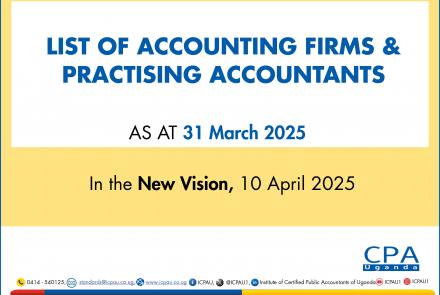Introduction to the Standard’s Significance in Modern Auditing Practices
In the dynamic and ever-changing sphere of financial auditing, professionals stand before the challenging yet pivotal task of safeguarding the integrity of financial statements. The advent of the International Standard on Auditing (ISA) 315 (Revised 2019), formally titled "Identifying and Assessing the Risks of Material Misstatement," marks a significant leap in fortifying the foundations upon which effective audits are structured. Setting the stage for a successful audit, this vital standard concentrates on a deep and insightful understanding of the audited entity in conjunction with its surrounding environment. It's imperative for auditors to attain a comprehensive knowledge base to navigate through the intricacies of financial statements and pinpoint potential risks to their material accuracy.
Expanding the Core Tenets of Understanding ISA 315
ISA 315's latest version delineates a layered and systematic process for the examination and comprehension of an audited entity. The standard mandates an in-depth inquiry into various aspects of the entity’s operations, scrutiny of the internal controls in place, and a meticulous analysis that spans the industry landscape the entity is part of. It charges auditors with the duty to meticulously examine the entity's business structure — peering into the depths of sources of income, scrutinizing investment strategies, and evaluating its competitive stance within the market. The end goal of these endeavors is to shed light on areas that might present considerable risks.
Deepening the Circumstance under Auditing's View
One must recognize that gaining an understanding of the audit subject extends beyond mere protocol; it is, in essence, the crux of any value-driven audit process. Acquiring this knowledge equips auditors with the insight necessary to tailor their audit endeavors to the entity's unique risk landscape. Take, for example, an audit of a burgeoning tech enterprise that allocates substantial funding into innovative research and development. Such an audit would likely diverge considerably from the scrutiny of a well-established manufacturing company entrenched with sizeable tangible assets. This fundamental comprehension is the pillar supporting the precision and efficacy of the audit examination.
Implementing ISA 315: Elaborated Procedural Steps for Practitioners
1. Entity and Industry Analysis in Depth: Venture into a profound examination of the entity's core nature, operational style, and the influence of industry trends and dynamics. Engage with factors such as the regulatory ecosystem, underlying market forces, and the competitive fray.
2. Detailed Scrutiny of Internal Control Systems: Delve into an exhaustive appraisal of the governance methodologies and internal controls the entity employs, examining the robustness of control activities, the efficacy of their information system, and the governance framework guiding the entity's operation.
3. Comprehensive Risk Identification and Evaluation: Drawing from a well-rounded understanding, identify sectors within the entity that may be susceptible to material misstatements. This could include complexities arising from intricate financial dealings, areas steeped in judgment, or segments vulnerable to tumultuous external factors, including economic volatility.
4. Strategizing a Responsive Action Plan: Construct a comprehensive audit strategy aimed at addressing the identified risks precisely. This includes judicious resource allocation, alongside determining the specific nature, timing, and scope of audit procedures to be deployed.
The Essence of Scalability Emphasized in ISA 315
The principle of scalability emerges as a pivotal feature within ISA 315. Auditors are empowered by the standard to modulate their procedures to resonate with the particular nuances in both complexity and size of the entity under audit. For smaller and less convoluted operations, the auditing process may be distilled to a more linear procedural flow. This adaptability is what anchors the standard’s relevance across the multifarious canvas of entities prevalent in today's marketplaces.
Elevating Documentation to the Forefront: Ensuring an Auditable Trail in ISA 315 Compliance
Emphasized within the fabric of ISA 315 is the cruciality of thorough documentation. Auditing professionals are called upon to meticulously record every step of their process: building a comprehensive knowledge base of the entity, marking out the discerned risks, and elucidating the logical underpinnings that steer the chosen audit approach. This documentation serves a dual-purpose role: it is the groundwork for later references during audit reviews and forms the backbone of quality assurance protocols.
Real-World Applications: The Principles of ISA 315 in Action
• Illustrative Scenario 1: Tech Start-up Challenge: While initiating an audit for a vibrant technology start-up, auditors were met with significant risks in recognizing revenues due to the elaborate entanglements present within software licensing pacts. A thorough and nuanced comprehension of the company's revenue generation model was paramount to appropriately navigate and mitigate these fiscal risks.
• Illustrative Scenario 2: Retail Chain Entering New Markets: A retail conglomerate's foray into unfamiliar geographical locales necessitated auditors to embark on a fresh evaluation of the entity’s risk profile. Careful consideration was given to divergent regulatory requirements and economic landscapes in these new territories.
• Illustrative Scenario 3: Focus on Manufacturing: For a manufacturing enterprise managing substantial inventory, risks of inventory obsolescence loomed large. The auditors channeled their focus after conducting a significant industry-wide and internal analysis concerning inventory management onto honing the audit's approach to fixate primarily on the accurate valuation of the inventory at hand.
Concluding Thoughts: ISA 315 (Revised 2019) as a Guiding Beacon for Auditors
In contemplation, ISA 315 (Revised 2019) transcends its role as a mere framework. It embodies a comprehensive guide that adeptly leads auditors through the labyrinthine nature of modern audits. By enshrining a requirement for an all-encompassing grasp of the entity undergoing the audit, ISA 315 arms auditors with the knowledge necessary to pinpoint and adapt to risks with precision and efficacy. As the terrain of business practices and associated risks continue to morph and expand, ISA 315 stands unwavering as a testament to the undimming need for auditors to embrace flexibility, depth, and keen insight in navigating their crucial role in upholding financial veracity.



